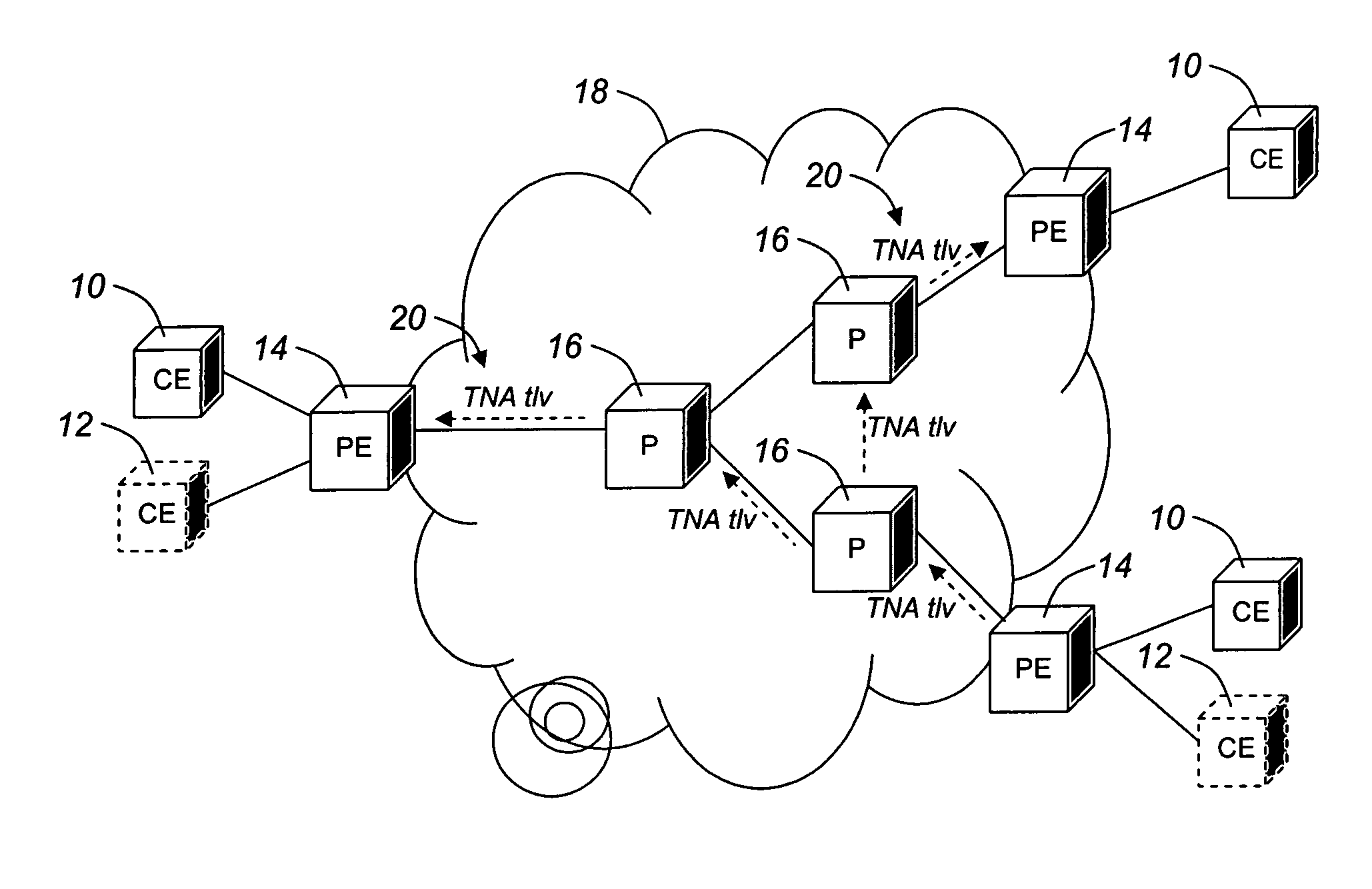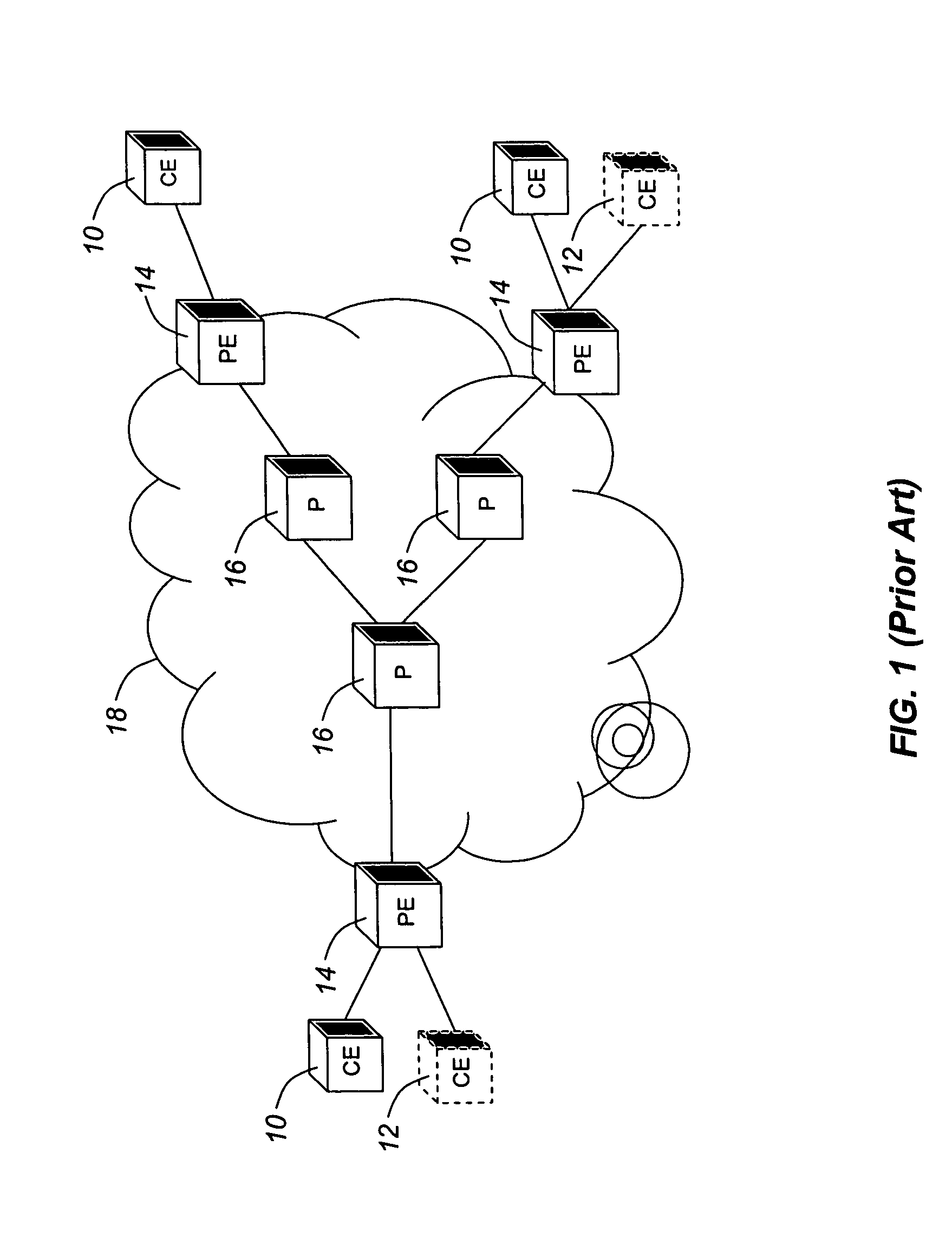Flexible mechanism for supporting virtual private network services based on source-independent distributed advertisements
a distributed advertisement and flexible technology, applied in the field of networkwork, can solve the problems of reducing the processing load of the central processing unit (cpu), restricting the call or connection to the closed, and adding additional advertisements
- Summary
- Abstract
- Description
- Claims
- Application Information
AI Technical Summary
Benefits of technology
Problems solved by technology
Method used
Image
Examples
Embodiment Construction
[0028]As described above, the present invention provides that the advertisement of VPN membership is done through source-independent distributed advertisements. Such advertisements may describe routing characteristics that are independent of the advertising node, i.e. characteristics of other nodes in the network. An example of using source-independent distributed advertisements for VPN is the use of extensions to the client reachability advertisement of the IGP routing protocol used in the domain. Client reachability advertisement, or TNA advertisement, is a relatively recent innovation that has been defined in the ITU-T ASON standards as a method of advertising reachability to a particular client or set of clients. The defined reachability advertisement includes only the client address or TNA and the node that supports reachability to the client. Advantageously, the reachability advertisement is extended to include other information relevant to VPN membership, such as a VPN ID ass...
PUM
 Login to View More
Login to View More Abstract
Description
Claims
Application Information
 Login to View More
Login to View More - R&D
- Intellectual Property
- Life Sciences
- Materials
- Tech Scout
- Unparalleled Data Quality
- Higher Quality Content
- 60% Fewer Hallucinations
Browse by: Latest US Patents, China's latest patents, Technical Efficacy Thesaurus, Application Domain, Technology Topic, Popular Technical Reports.
© 2025 PatSnap. All rights reserved.Legal|Privacy policy|Modern Slavery Act Transparency Statement|Sitemap|About US| Contact US: help@patsnap.com



